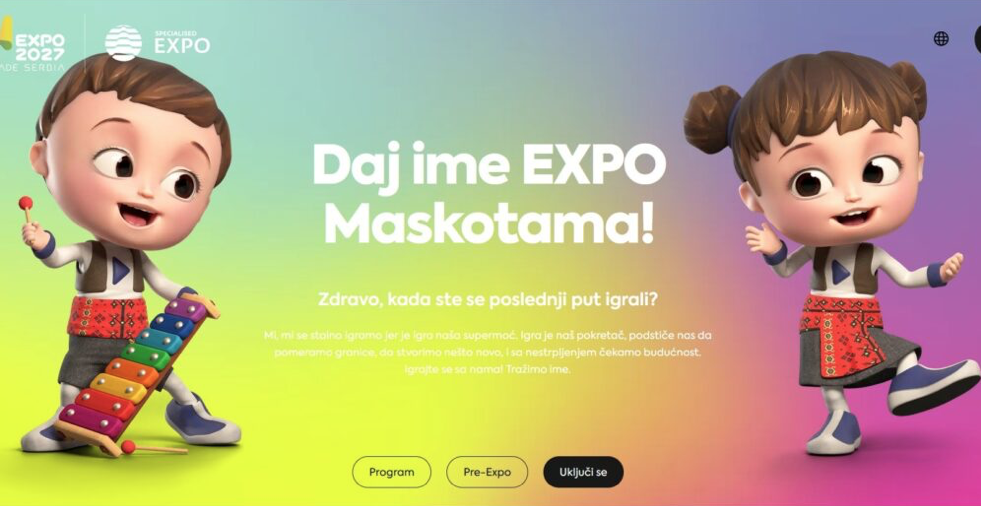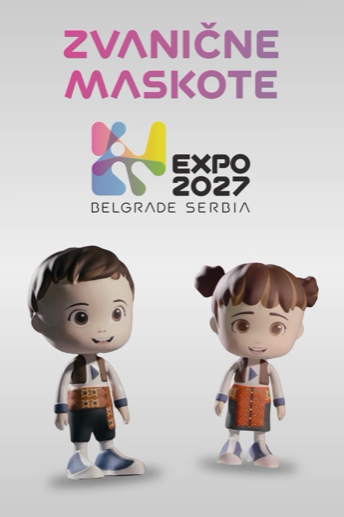The director and founder of our company gave an interview to #Forbes Serbia on the topic of new mascots for the biggest event in the country that awaits us in 2027. Journalist Hristina Kovačević conducted this conversation.

- How do you see the evolution of mascots over the decades? What has changed in their design and what they communicate?
Mascots have evolved from simple symbols or animals into complex communication tools. In the 1970s, they were likable characters for children. In the 1990s, they gained more stylization and commercial dimensions. Today, mascots are multimedia ambassadors – they carry messages of values, identity, and sometimes even “soft” political or social positions. Design has moved from two-dimensional to 3D, animation, applications, and even mime culture. They no longer communicate only national identity, but also global (or politically acceptable) values such as sustainability, equality, digital literacy…
- When you look at mascots from major sporting competitions, what catches your eye the most? Which elements are well-designed, where do you see room for improvement, and how different are they from today’s mascots (including those presented as mascots for EXPO 2027)? Are the EXPO mascots better or worse?
The most successful mascots (like Kobe from Barcelona in 1992 or our Vučko) did not generate existing reality, but abstracted it. They combine clarity and ease of memorization, but also leave room for interpretation. The EXPO 2027 mascots visually lean on this trend but in modern circumstances. It seems to me that they are functional, but not revolutionary. So, they have the elements that are needed, but we will see in 2027 how they will turn out.
- The mascots for EXPO 2027 combine traditional costumes with modern elements, such as sneakers. What do you think of this combination of folk costumes and sneakers? How do you comment on the blue “play” sign on the T-shirts?
It is obvious that the message is that our country does not perceive tradition as something closed and conservative, but as material for creative reinterpretation. Sneakers as a symbol of everyday life and youth “ground” the costume and give it a contemporary pulse. The blue “play” sign is an interesting metaphor: a call to movement, to exploration, to dialogue. However, how it all fits together and whether it will leave people with the impression of a generic 3D model to which certain applications have been added later remains to be seen.

- Special emphasis is placed on children. Why are children increasingly used as symbols in projects like this? What message does it send?
Children today are not just an audience, they are also participants in the creation of content and a channel for the distribution of content. The use of children’s characters sends a message of the future, purity, honesty. In times of crisis, uncertainty and polarization, brands and events use children as an emotional anchor. Also, the message that EXPO 2027 wants to send is that the event is not elitist, but inclusive, and children are a universal point of connection. Their presence creates a sense of hope and continuity. Now, whether this message is in line with the overall communication strategy of the event, it is very early to analyze.
- If you had the opportunity, how would you approach the task of designing a mascot for EXPO 2027? What would be important for you to emphasize, how would you design a character that communicates with the audience?
My priority would be the simplicity and applicability of the mascot. I am talking about the technical elements of the mascot. However, the values of the mascot and its symbolism should come after a series of qualitative and quantitative studies, and I would engage eminent artists for the solutions. The final decision would be made, for example, by our young citizens under 25 in some kind of competition. What I personally like is the symbolism of our white eagle and crown. The eagle represents tradition and hope for flight, and the crown is – EXPO 2027 as probably the largest and most complex infrastructure project after the construction of New Belgrade. In addition to being a symbol of the state since the pre-Nemanjić era.
- How important is audience involvement in the mascot naming process? Does this approach – through voting on the website – contribute to a better emotional connection between the audience and the brand?
I think it’s important. Participation builds a sense of belonging. When the audience votes for a name, it becomes part of the story. It is said that brands today no longer communicate to people, but with people. With this approach, EXPO 2027 is trying to create a shared identity, and this is the key to a lasting emotional connection. Research shows that an engaged audience is three times more likely to share content and recommend the event to others.
- To what extent do mascots have a long-term impact on the image of an event or brand? Can they be a key element in memory and perception?
They can help with that. A mascot can connect with the emotions of the event, something like an old photograph. On the other hand, it can send a message of seriousness to the organizer, but also bring in excellent revenue through the exploitation of that brand. In that sense, they are not just a symbol, but an investment in reputation.
—
You can read the entire article, published on August 21, 2025, here.
